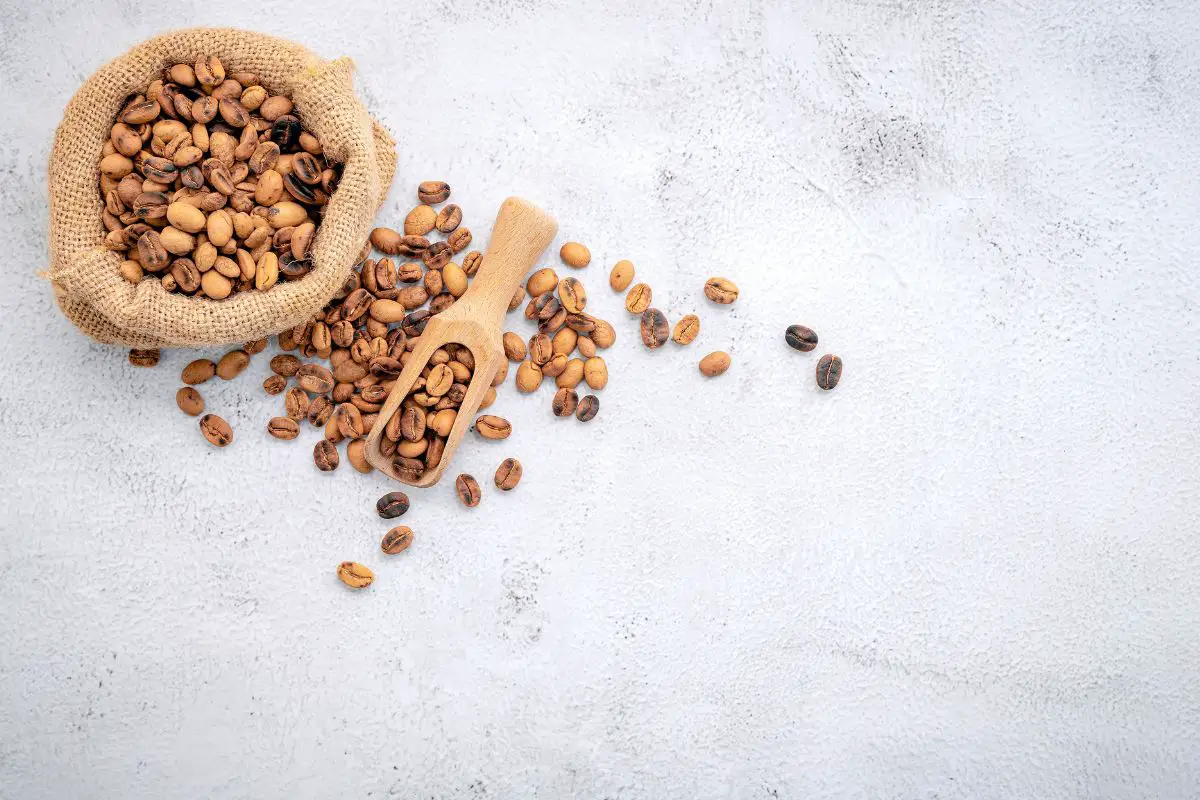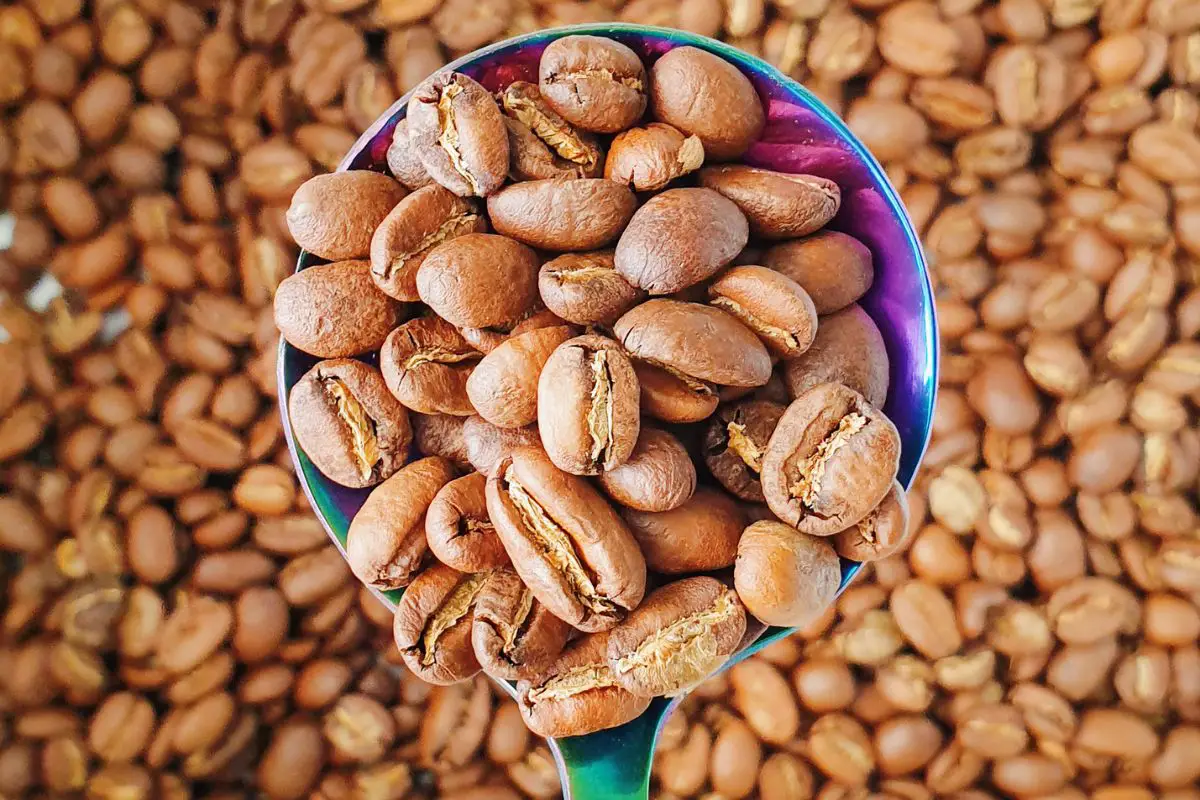The question of whether blonde roast is stronger is a topic that has been debated among coffee enthusiasts for quite some time.
Coffee aficionados and casual drinkers alike have expressed their opinions, leading to confusion and uncertainty.

In order to provide clarity on this matter, it is essential to delve into the intricacies of coffee roasting levels and the factors that contribute to the strength of a cup of coffee.
This article aims to analyze the characteristics and caffeine content of blonde roast, debunking the myth that it is inherently stronger than other roasts.
By understanding the nuances of coffee strength and appreciating the unique flavors that blonde roast offers, coffee lovers can make informed decisions when selecting their preferred brew.
This comprehensive exploration will equip readers with the knowledge needed to navigate the diverse world of coffee roasting with confidence and ensure a satisfying and pleasurable coffee experience.
Key Takeaways
- Blonde roast is lighter in flavor and intensity compared to darker roasts.
- Blonde roast has a milder taste profile and allows natural flavors to shine through.
- Blonde roast preserves more caffeine content compared to darker roasts.
- Strength of coffee is not solely determined by roast level, and blonde roast is not inherently weaker in taste or caffeine content.
Understanding Coffee Roasting Levels
The coffee roasting level of blonde roast is often perceived as being lighter in flavor and intensity compared to darker roasts. Roasting coffee beans involves applying heat to transform their chemical and physical properties, resulting in different levels of roasts.
Blonde roast is typically roasted for a shorter duration at lower temperatures, resulting in a lighter colored bean with a milder taste profile. The lighter roast allows the natural flavors and characteristics of the coffee beans to shine through, providing a delicate and nuanced cup of coffee.
Blonde roast is known for its bright and crisp acidity, with flavors that are often described as floral, fruity, and tea-like. The lighter roast also preserves more of the caffeine content compared to darker roasts, making it a popular choice for those seeking a more energizing cup of coffee. Additionally, the lighter roast tends to have a smoother and cleaner finish, with less bitterness and a lighter body.
Exploring the characteristics of blonde roast allows coffee enthusiasts to appreciate the subtleties and complexities of this roasting level. By understanding the unique flavors and attributes of blonde roast, individuals can make informed decisions when selecting their preferred coffee roasting level.
Exploring the Characteristics of Blonde Roast
Characterized by its lighter hue and delicate flavor profile, blonde roast exhibits a subtle elegance that invites an exploration of its nuanced characteristics.
Blonde roast is known for its light to medium body, with a smooth and mellow taste that is often described as having floral, fruity, and nutty notes. This roast is achieved by exposing the coffee beans to heat for a shorter duration compared to darker roasts, resulting in a lighter color and a less pronounced flavor.
One of the defining characteristics of blonde roast is its higher acidity. This acidity adds a bright and lively quality to the coffee, making it refreshing and vibrant on the palate. Additionally, the shorter roasting time preserves more of the coffee’s natural caffeine content, providing a boost of energy with each cup.
Blonde roast is often favored by those who prefer a lighter and more nuanced coffee experience. Its delicate flavors and subtle complexity make it an ideal choice for those who appreciate the intricacies of coffee. Furthermore, its lower bitterness and acidity levels make it a safer option for individuals with sensitive stomachs or acid reflux.
Transitioning into the subsequent section about comparing caffeine content in different coffee roasts, it is important to understand how the roasting process can affect the caffeine levels in the final product.
Comparing Caffeine Content in Different Coffee Roasts
A notable aspect to consider is how the duration of the roasting process influences the caffeine content in various coffee roasts. The longer the roasting process, the more caffeine is lost, resulting in a lower caffeine content in the final product. This is because caffeine is a relatively volatile compound that is easily degraded by heat. As a result, darker roasts, which undergo a longer roasting process, tend to have less caffeine compared to lighter roasts.
To further emphasize this point, consider the following:
- Lighter roasts, such as blonde roasts, are typically roasted for a shorter duration, preserving more of the caffeine content. This means that blonde roasts generally have a higher caffeine content compared to darker roasts.
- The caffeine content in coffee can also vary depending on the type of coffee bean used. Arabica beans, which are commonly used in specialty coffee, generally have a lower caffeine content compared to Robusta beans.
- Another factor that can influence caffeine content is the brewing method. Different brewing methods can extract varying levels of caffeine from the coffee grounds, resulting in differences in caffeine content in the final cup of coffee.
Understanding the relationship between the duration of the roasting process and caffeine content is important for coffee enthusiasts who desire a caffeinated brew. However, it is just one of the many factors that affect the strength of coffee, as we will explore in the subsequent section.
Factors Affecting Coffee Strength
One important consideration when evaluating coffee strength is the interplay of various factors. These factors include the type of coffee bean used, the roast level, the brewing method, and the coffee-to-water ratio.
The type of coffee bean can have a significant impact on the strength of the coffee. For example, Robusta beans generally contain more caffeine than Arabica beans, resulting in a stronger coffee.
The roast level also affects the strength of the coffee. Darker roasts tend to have a bolder flavor and may be perceived as stronger, although they actually contain less caffeine than lighter roasts.
The brewing method also plays a role in coffee strength. Methods such as espresso or French press tend to extract more flavor compounds from the coffee, resulting in a stronger brew.
Additionally, the coffee-to-water ratio can impact the strength of the final cup. Using a higher ratio of coffee to water will result in a stronger coffee.
Understanding these factors can help coffee enthusiasts adjust their brewing techniques to achieve the desired strength and flavor profile.
Transitioning to the subsequent section about ‘debunking the myth: is blonde roast stronger?’
Debunking the Myth: Is Blonde Roast Stronger?
Contrary to popular belief, the strength of coffee is not solely determined by the roast level. While it is commonly assumed that darker roasts are stronger in taste and caffeine content, the reality is more complex.
The strength of coffee is influenced by multiple factors including the origin of the beans, the brewing method, and the ratio of coffee to water.
Roast level primarily affects the flavor profile of the coffee rather than its strength. Darker roasts tend to have bolder, more pronounced flavors, often described as smoky or chocolatey. On the other hand, lighter roasts, such as blonde roast, preserve more of the original characteristics of the coffee beans, resulting in a lighter and more nuanced flavor profile.
Blonde roasts are not inherently weaker in terms of caffeine content either. While it is true that caffeine is partially lost during the roasting process, the difference in caffeine levels between different roast levels is minimal. The variation in caffeine content is more dependent on the type of coffee bean used rather than the roast level.
The strength of coffee is not solely dependent on the roast level. Other factors such as origin, brewing method, and coffee-to-water ratio play significant roles. Understanding these factors can help coffee enthusiasts enjoy the unique flavors of blonde roast and explore the full range of coffee experiences.
Enjoying the Unique Flavors of Blonde Roast

To fully appreciate the delicate notes and intricate flavors of a lightly roasted coffee, one can imagine sipping it as if delicately savoring the subtle nuances of a fine wine, allowing the flavors to dance across the palate.
Blonde roast, also known as light roast, offers a unique experience for coffee enthusiasts who seek a lighter and more nuanced flavor profile.
Blonde roast is often associated with a milder taste compared to darker roasts, but this does not mean it lacks strength. The term ‘strength’ in coffee refers to the caffeine content, and contrary to popular belief, the roast level does not significantly impact caffeine levels. Whether it is a blonde roast or a dark roast, the caffeine content remains relatively consistent.
What sets blonde roast apart is its ability to highlight the inherent flavors of the coffee beans. With a shorter roasting time, the natural flavors and characteristics of the beans are preserved, resulting in a bright and vibrant cup of coffee. This roast showcases floral, fruity, and citrusy notes that may be overshadowed by the bolder flavors of darker roasts.
For those who desire safety, blonde roast can be a suitable choice. Its lighter flavor profile may be more appealing to those with sensitive stomachs or caffeine sensitivity. Additionally, the shorter roasting time reduces the formation of potentially harmful compounds that can occur during prolonged exposure to high temperatures.
Enjoying the unique flavors of blonde roast is a delightful experience that allows coffee enthusiasts to explore a lighter and more nuanced side of coffee. While blonde roast may be milder in taste, it offers a distinct flavor profile that highlights the natural characteristics of the beans. Moreover, its lighter profile can be a safer option for individuals with specific dietary concerns.
Frequently Asked Questions
How does coffee roasting affect the acidity level of different roasts?
Coffee roasting affects the acidity level of different roasts. As the beans are roasted for a longer duration, their acidity decreases. Lighter roasts like blonde roast tend to have higher acidity compared to darker roasts.
Are there any health benefits associated with drinking blonde roast coffee?
Blonde roast coffee, although milder in flavor, still offers health benefits. It contains antioxidants that can help reduce the risk of certain diseases, such as heart disease and type 2 diabetes.
Can you use the same brewing methods for all coffee roasts?
Different coffee roasts require different brewing methods to achieve optimal flavor. For example, lighter roasts like blonde roast are typically brewed with a shorter extraction time and lower water temperature compared to darker roasts.
Does the country of origin impact the strength of a blonde roast?
The country of origin does not directly impact the strength of a blonde roast. However, factors such as the altitude, climate, soil quality, and cultivation methods in different countries can indirectly influence the flavor profile and perceived strength of the roast.
Are there any specific flavor profiles that are commonly found in blonde roast coffee?
Some common flavor profiles found in blonde roast coffee include light-bodied, delicate, and fruity. These flavors are achieved by roasting the beans for a shorter period of time, preserving the natural characteristics of the coffee.
Conclusion
In conclusion, after analyzing the various aspects of coffee roasting levels and debunking the myth surrounding the strength of blonde roast, it is evident that the perception of strength in coffee is not solely determined by the roasting level.
Factors such as caffeine content, brewing method, and personal preference play a significant role in determining the perceived strength of a cup of coffee.
Therefore, it is important for coffee enthusiasts to explore different roasting levels and appreciate the unique flavors that each one offers, just like a painter embracing the vibrant hues of a diverse palette.
Related article:
Which Roast Coffee Is the Strongest?